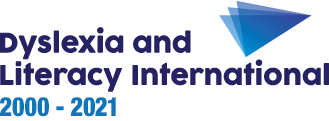Heading 1
Heading 2
Dyslexia: How to identify it and What to do
It is widely recognised that whilst some children will show some traits of dyslexia in varying degrees, up to 5% of this population will display a cluster of severe problems with the written language which we shall discuss in Section 2 of this course.
This learning course is relevant to all professsionals who can expect to come across pupils with dyslexia to a greater or lesser degree in classrooms and beyond.
This introductory course sets out to address awareness and appropriate responses to learners of different learning abilities and neuro-diverse profiles in inclusive learning and assessment environments. All strategies and techniques presented are within an inclusive philosophy, and therefore useful for all learners.
This course could be used at the trainee stage for professionals working with children and adolescents.
This introductory course is therefore recommended for all who wish to develop a basic understanding of dyslexia and relevant learning and assessment strategies.
For formal evaluation leading to certification, national ministries are encouraged to evaluate this course and administer certificates accordingly as part of their training programmes.
This introductory course may be adapted for use in any local cultural and linguistic setting.
The course first explains what dyslexia is and its consequences on many aspects of life. It helps professionals understand how to plan and implement teaching and assessment using inclusive strategies, thus also addressing dyslexic learners’ needs. The course content presents the principles and methods of multi-sensory teaching necessary for students with dyslexia to access learning and beneficial for all children. Such strategies are beneficial for all learners
Learning outcomes
After reading this course, you should be able to:
- understand what dyslexia is;
- know how to identify children who may be at risk;
- be aware of inclusive strategies when addressing reading, spelling, writing and the curriculum with children with and without dyslexia;
- become familiar with strategies which help children address their specific challenges with concentration, slow processing, memory and organization; and
- employ inclusive strategies to help pupils manage their profile
You should also be able to understand that:
- all children learn differently, which is why inclusion should always be the foundation of all teachin, learning and assessment;
- dyslexia may have a negative impact on the child, particularly in the school environment, and so early identification and intervention are important; and
- positive aspects of dyslexia should be explored, recognised and celebrated.
More generally, we hope that this course will be of benefit to professionals and learners. As the Head of Support Services of an Elementary school that piloted the course noted:

Frequently Asked Questions
We have collected some FAQs arising from the current course on a separate page.
How to follow this course
You should make every effort to work in pairs, at least for the questions and activities. The feedback from the pilot suggests that participants who worked in pairs gained more than those who followed the course on their own:
Feedback indicates that the open-ended questions were especially effective because they led to many discussions and, as a result, deeper understanding.
Working in pairs makes it possible to practise the various assessment strategies presented in preparation for learning environments, including the classroom.
Please bear in mind that you can click from anywhere in the course on Glossary, in the menu on the right, to access the definitions of complicated or key words.
Duration: About 20 hours, depending on the extra time spent in further reading at the optional Second Level of the course.


